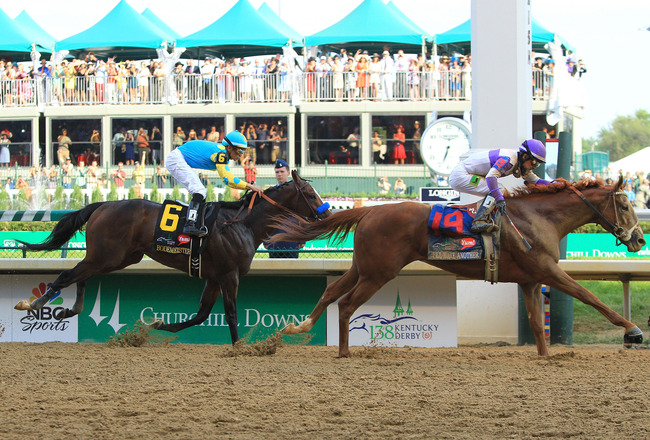Horse racing season in the United States this year brings with it a unique case of doping involving the horse I'll Have Another, winner of the Kentucky Derby and the Preakness, leaving only the Belmont to cap the Triple Crown.
The current controversy involves a practice called "milkshaking" described by the Guardian as follows:
The problem with I'll Have Another, though, is his trainer. Doug O'Neill runs a very successful operation on the west coast but, when it comes to violations of US racing's rules on medication, O'Neill's rap sheet – as the New York Times pointed out shortly after the Derby – is long and inglorious. It includes more than a dozen breaches of the rules in four different states while he also faces suspension of his licence for up to six months after one of his horses, Argenta, showed a raised level of TCO2 – the mark of a "milkshake".Illegal for horses, but perhaps OK for racers in the Tour de France?
"Milkshaking" means forcing a bicarbonate solution into a horse's stomach via a tube inserted into its nose, a procedure which is as crude and unpleasant as it sounds. The theory is that the alkaline solution counteracts the effects of lactic acid building up in a horse's system when it exercises and thus delays fatigue. The practice is generally accepted to have been rife in US racing until quite recently, on the west coast in particular.
O'Neill says – indeed, he swears on his "children's eyes" – that he has never milkshaked a horse and claims to be funding research into the possibility that legal raceday drugs, such as the anti-bleeding agent furosemide, might have caused the positive test. He is still fighting the Argenta case, nearly two years after the positive test.

No comments:
Post a Comment